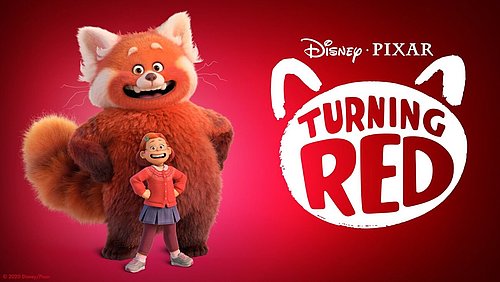
From Star Wars to The Beatles: Tweens’ Online Fandom Practices and What’s Next
The anatomy of the modern day fan
By
Nathalie Heesom-Green

Fandom Through the Ages
The nature of a fan is a time-old phenomenon: as musicians rise and fall in popularity or as a book series comes in and out of fashion, the anatomy of a fan remains essentially the same no matter the object of their adoration.
While attitudes towards the average ‘fanatic’ have increasingly become more positive since the age of Beatlemania, engagement in fandom practices has continued to be a conduit through which individuals are able to engage in self-expressionism and communal relationality. From this trend, we see an upturn in societal acceptance of the average fan and increasing commercialism of their interests. Star Wars, for instance, has evolved from a gatekept niche of the die-hard ‘weirdo’ nerds to a widely available film and television franchise enjoyed by all types of people.
While the things people take an interest in evolve over time, the behaviours, attitudes and values of the self-identifying fan remain a pillar to the fandom experience: a 1960s fan of the Beatles and a 2020s fan of Harry Styles are reflections of the same ideals and characteristics across time.
A New Era
Fandoms have also opened up to include younger people. As fans from the budding era of 20th-century media become parents, they increasingly share their passions and interests with their children, who develop their own interests in modern media as they age. 1
The process of coming of age in a highly saturated commercial landscape presents a wealth of material pop culture for young people to engage with and enter into associative fandoms: the Netflix biannual report lists 18,000 titles and nearly 100 billion hours viewed between January-June 2023;2 120,000 new music audio files are reportedly uploaded to the internet daily;3 and from 2014 to 2021 the NFL generated around $4.95 billion in revenue annually from TV broadcasting rights.4 With so many options, it's not surprising to see tweens navigating multiple fandoms across a single day, let alone through their adolescence.
Tweens also exist as semi-independent financial bodies, where they have decision-making influence over family finances as well as ‘pocket money’ to spend on themselves, thus presenting the opportunity to express fanship through merchandising and personal branding.5 This means that fandom is not only a contagious affiliation which young people adopt from within their homes, but also an entry point into new settings through recognition of fan affiliations and merchandise.
Broaching the Public Sphere
The Global Kids Sports Report: Fandom outlines the hereditary nature of fanship in regard to sports viewing and support.6 We see that tweens are more likely to be fans of a sports team that their parents and family already support: they are recruited into the fandom through their familial values, merchandise gift giving and practices of watching sporting events.
However, as tweens age into steady friendships and other communities external to the family, this fandom expressionism migrates to online groups and peer-oriented networks as a means by which to relate to others and create external bonds of familiarity.
Multiple forms of media exist across the internet as access points into fandom: online text-based social medias such as Reddit, Tumblr and Discord host groups dedicated to fandom discussion and theory analysis; visual media on TikTok, Instagram and YouTube consist of highlight reels and complication videos, as well as other fan-made content; and full length content is increasingly more accessible on streaming platforms such as Netflix, Disney+ or ITV4.
Benefits of Being a Fan
Fandom affiliation presents a number of benefits to young people, particularly at the first break-away from the family unit into larger social networks.
By the nature of fanship and personal branding, individuals are able to recognise other fans and identify people they are likely to empathise with in schools, recreational clubs and other public spaces. From the understanding of shared experience derived from fandom membership, tweens are able to more easily connect with others and further ease the transition into adulthood through a sense of belonging; by talking about favourite characters, fan theories and ‘headcanons’, fanship provides a baseline of common understanding through which tweens can build social networks of support.
Off the back of these social networks, fanship allows the practice of empathy and self-regulating within a group (‘Team Edward or Team Jacob?’ should not ruin a friendship).7 By using fandom membership as the commonality between individuals, tweens can recognise and emotionally relate to the experiences of their peers as they consume the same media in tandem with one another.
Thus, through these group experiences, tweens can better understand their place within a social network, how to manage those relationships and maintain healthy support networks by nurturing their sense of belonging within a group.
Coming-of-age Online
Through the evolving nature of fanship in the 21st century and increasing interconnectivity, being a fan now means tweens can express their pop culture affiliation through user generated content (UGC) on multiple channels online. This culminates in overwhelming creativity; creative writing is evident in online storytelling communities such as AO3 and Wattpad (my own old stomping grounds, circa the 2010s), where anyone can write, share and receive feedback on fanfiction; online community platforms such as Facebook, Discord and Reddit allow people to share and discuss fan-theories, headcanons and plot-holes;8 social media TikTok and Instagram both host millions of ‘fan accounts’ where individuals repost images and videos relating to their fandom or create their own visual media to celebrate their ‘stan’; YouTube and live streaming platforms such as Twitch allow fans to create longer-form content or share their personal experiences of the fandom, such as video game play-through, live readathons or video essays dissecting canon content.
This explosion of UGC available online for fans to consume and produce is not only an outlet for expressionism and creativity but also facilitates cognitive thinking and communication among young people: it presents an opportunity to be critical and analytical in a positive manner that benefits the group as a whole.
The culmination of an interconnected social network and the ability to freely express oneself both online and IRL through art, literature or social media results in (to put it bluntly) a happier kid. The positive engagement with easily accessible and reliable online content and IRL relationality provides a steady stream of satisfaction to our brain: the anticipation of the positive engagement with fandom and the following positive engagement with fandom itself provide a tween with a constant source of enjoyment through community and expressionism.
This is particularly important at this stage of life as there are many other distressing changes a tween may experience as they transition from childhood to adulthood. The fandom exists as a reliable, constant and steady crutch in an otherwise unsure environment where a tween can find comfort.
What's Next?
The evolution of fandom from ‘not chill’ or ‘uncool’ obsessive behaviour to a socially acceptable - even exclusive - status has opened up an entirely new sense of relationality that does not depend on an individual's physical or cultural characteristics.
Instead, people come together based on a shared interest external to themselves as a person. Fandom is fluid in that sense: the identity exists beyond the bounds of the individual, and is rather more like a hat that one can put on and take off at will, dependent on their own personal developments and interests. There is no material drawback to changing your mind or moving on from one fandom to another: the essence of fanship remains the same, regardless of whether you age out of Alex Rider the Teenage Spy,9 and mature to enjoy A Song of Ice and Fire instead.10 The experience of joy and belonging extend beyond the particularities of the group in which it is found.
From previous trends in the prevalence of fans and fandom membership, it is likely to continue to be an essential facet of people’s sense of identity: we see Harry Potter fans sorting themselves into Hogwarts Houses and integrating those characteristic traits into their personalities, Taylor Swift fans identifying as ‘Swifties’ and generational feuds arising as the result of soccer team affiliations. The integration of external values from the fandom is already being internalised by individuals, so we can only expect them to maintain their importance or become even more prevalent in identity creation practices.
This may be the case with increasing global interconnectedness and ease of migration: less stock is put in traditional sources of identity development, such as nationalism or religion. Instead, personal choice is prioritised, and people identify with the things they enjoy, rather than what is expected of them.
- The modernised family is increasingly disconnected from wider societal structures, such as neighbours and extended familiar support systems. As a result, the previous mindset of ‘it takes a village’ to raise a child has shifted to be wholly internal to the nuclear family. This means parents and children inevitably spend more time together, and thus children become integrated into the interests of the parent by proximity and exposure to it. (Ulferts, 2020)
- (Maas, 2023)
- (Stassen, 2023)
- (StatInvestor, 2024)
- Tweens have “an estimated spending power of $200 billion” (Pearson, 2016)
- (We are Family, 2023)
- A popular argument arising within the Twilight Saga Fandom, referencing who was the most suited male love interest - Edward Cullen or Jacob Black - for the Female Main Character, Bella Swan.
- Fan-theories are ideas and speculation that audiences have about films, books and other media; head-canons are audiences' personal interpretation of a fictional story that aren’t ‘official’; plot-holes are inconsistencies in the narrative or character development in film, books and other media.
- This book series written by Anthony Horrowitz follows the international adventures of 14 year old Alex Rider as a spy for the British organisation MI6 - a personal childhood favourite.
- The real ones will recognise this as the now popularised HBO TV series A Game of Thrones, the fantasy series originally written by George R.R. Martin, who - to most fans’ disgruntlement - has yet to publish the final instalments of the book series.


